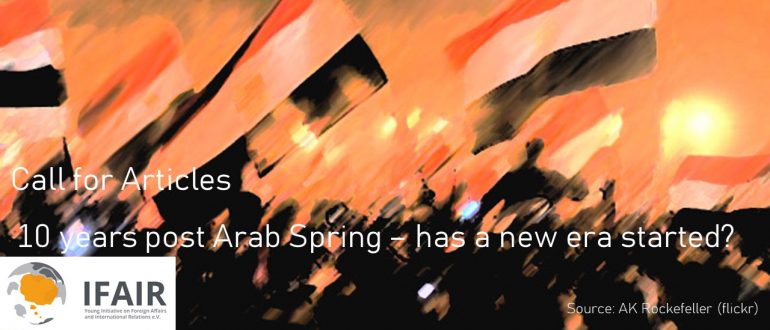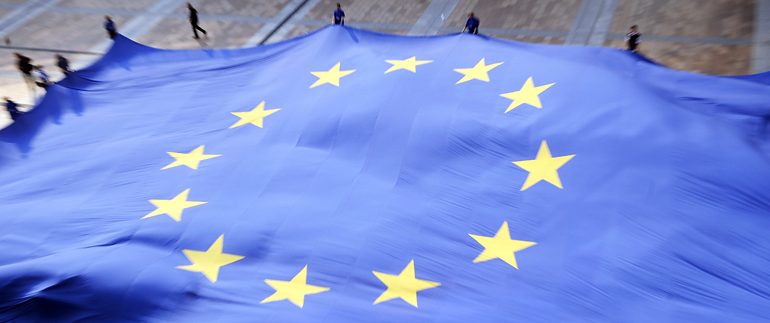Iran in a Global Context: Summary of a Lecture by Dr Mostafa Zahrani
Former Iranian diplomat Dr Mostafa Zahrani gave a lecture to Iranian and German students in Tehran on 11 September 2012. Dr Zahrani assessed the current situation of Iran and took position towards recent political questions concerning Iran’s foreign policy. He predicted a continuation of tensions between Iran and the so-called “international community” due to a lack of mutual trust and stressed that the Iranian nuclear program was purely civilian in nature.
1. Iran in the structure of the International System
Dr Zahrani argued that Iran’s role in a global context is best to be analyzed and understood by focusing on the systemic level of analysis. He pointed out that from the end of World War II to the collapse of the Soviet Union, Iran’s international behaviour was mainly dominated by the bipolar structure of the international system.
Prior to the Iranian revolution in 1979, Iran was allied with the United States (U.S.) and part of its “Twin Pillar Policy” towards the Middle East: In order to contain Soviet influence in the region and to stabilize its own local power structure, the U.S. used Saudi Arabia and Iran as close strategic partners. After the Islamic revolution, however, Iran’s foreign policy had to navigate carefully between the communist and the capitalist block. As Dr Zahrani argued, the revolution was only successful because U.S. policymakers had completely overseen the revolutionary atmosphere in Iran. Thus, the success of the revolution can be considered the biggest failure of U.S. intelligence in history.
2. Identity crises in Iran and the U.S.
According to Dr Zahrani, Iran’s current state of affairs is dominated by two identity crises, the first being the Islamic revolution itself (as an internal factor) and the second being the collapse of the bipolar international system with the breakdown of the Soviet Union (as external factor). Both these identity crises taken together were decisive reasons why Iran was no longer able to clearly define its interests in foreign policy, at least for all strategic questions that are less fundamental than issues such as territorial integrity. This problem is still prevalent today. In its foreign policy, Iran lacks a consistent hierarchy of norms and is continuously wavering between strategies which are either motivated by geostrategic considerations or the Islamic ideology.
Complementarily, the end of the Cold War had also caused an identity crisis in the U.S.: It was no longer possible to formulate an adequate threat perception guiding international security policy and justifying the national budget system. Only after the 9/11 attacks, the U.S. government was able to identify a new enemy, namely Al-Qaeda and “international terrorism”. This was the opportunity for neoconservatives to strengthen the power of government (especially in the realm of security policy) and to implement their political ideas. Already in 1992, prominent members of the Bush administration had published the so-called “Rumsfeld Commission Report”, which should become authoritative for their future policies. They argued that in the context of weapons of mass destruction (WMDs), “absence of evidence does not mean evidence of absence” and claimed that conventional standards of rationality would not apply for (religious) extremists, since they would use WMDs regardless of consequences if only they had them. This provided the ground for the U.S.-doctrine of preemptive strikes.
As to Dr Zahrani, Iran supported the U.S. foreign policy in the aftermath of 9/11, especially by assisting in the regime change in Afghanistan. In doing so, Iran hoped for an amelioration of the bilateral relationship. Instead, Iran found itself as a member of the “Axis of Evil”. Consequently, it had to consider itself to be one of the next most prominent enemies of the U.S.: Iran was and still is said to fulfill all criteria that constitute a threat for international stability according to the “Strategic Triangle”, which was defined by Henry Kissinger and comprises being a rogue state, aiming at the production of WMD and allegedly supporting terrorism.
3. The civilian character of Iran’s nuclear program
As concerns Iran’s nuclear program, Dr Zahrani insisted that its purpose was merely civilian. He rejected the perspective that Iran could achieve greater national security by being pulled into a nuclear arms race and pretending sufficiently high second strike capability. The possibility to achieve this point would only be a chimera, let alone if the point exists at all. He concluded that for the Iranian government it was rational to aim at a civilian use of nuclear energy in order to address the economic needs of the people; yet it would not be rational to aim at nuclear armament. Furthermore, he argued that it was a crucial aspect of the Islamic Republic of Iran (I.R.I.) to be committed to a concept of “moral warfare”, which encompasses the renunciation of WMDs as they do not discriminate between civilians and non-civilians.
To prove this point, however, is difficult in an international environment that not only is dominated by mutual mistrust but also does not consider absence of evidence to be evidence of absence and subliminally accuses a country to potentially act in an “irrational” way. Based on this analysis, Dr Zahrani expects tensions to continue and Iran to remain an isolated country in the international system. He anticipates the international sanctions to persist, although they only affect the population, since the government is used to them for more than thirty years and knows very well how to circumvent them. Nevertheless, he considers an Israeli attack on Iran to be unlikely: It will only take place if the U.S. assures full military assistance in advance, which it is currently unwilling to do, independently of the results of the upcoming presidential elections.
4. Iran and current developments in the Middle East
Dr Zahrani pointed out that the conflict between Iran and the U.S. is not necessarily ideological. He emphasized the historical narrative that ideologically the Iranian revolution was mainly directed against Soviet communism, not Western-style liberal democracy, at least in the beginning. In his eyes, struggles about the ideological dimension of Islam play a role only for Iran’s policies towards the region, as it is the intention of I.R.I. to influence and inspire an Islamic audience on a non-governmental level.
According to his conviction, the U.S. approach to the Egyptian revolution in 2011 was based on experiences from the Iranian revolution: In contrast to what happened in Iran 32 years ago, the U.S. government prevented the Egyptian army from de-legitimizing itself during the protests and is following a policy of rather accepting Islamist movements to govern than fighting against them. This policy is based on the expectation that Islamist movements which used to be ideologically motivated during their time in opposition will become more pragmatic as soon as they are in power. This was the way to prevent the Egyptian revolution to become even more Islamist in nature.
Finally, he predicted a long continuation of the war in Syria and affirmed Iran’s intention to take a neutral position in the conflict. However, he argued that if an international intervention forces Iran to take sides, it will choose to support the government by President Al-Assad. Given the overall situation in the Middle East with more and more players involved, he expects the regional security system to become even more complex.
by Steffen Murau
Steffen Murau studied Polictical Science, Economics, Philosophy and Law at the University of Munich, the Université Libre de Bruxelles and at the University of Alexandria. Occasion of Dr Zahrani’s speech was a German-Iranian Fall School which was jointly organized by the Center for Global Politics at Freie Universität Berlin and the School of International Relations Tehran.


